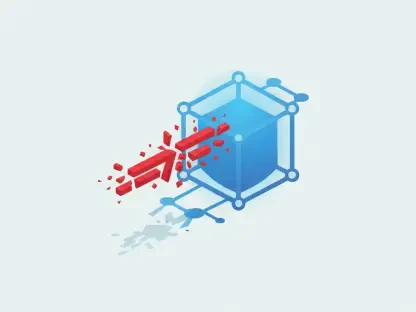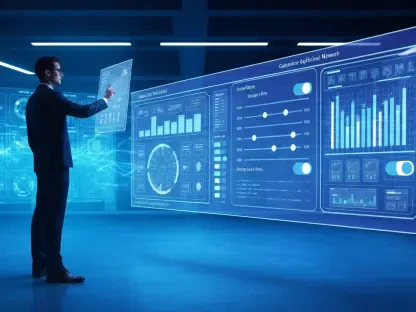Knowing how your enterprise functions (especially in times of almost constant disruptions, be it economic, geopolitical, or technological) is harder than it has ever been before, for both you and your peers. All companies are facing a significant headache in driving business: fast-changing trends, new regulations or compliance requirements, immense competition from peers seeking to outperform them, and an array of consumer expectations that turn almost every step into a challenge.
You can’t just continue delivering innovative products to the market, not when both your industry and customers expect more. Instead, you need to be informed regarding every part of your company and its strategies for long-term resilience and success, and be prepared to swiftly and easily adapt to any changes in trends, demands, or compliance requirements. For that to happen, you’re required to use the lifeblood of your organization (your data) and build a pool of comprehensive insights that’ll help you keep an eye on all that’s happening among your teams and their actions, while also helping you make better decisions for the future.
Where’s the right place to start? That’s not an easy question to answer, even for sector professionals—but for many, the best place to jumpstart your new adventure in data science lies in learning how business intelligence functions in comparison with business analytics, whether they’re both valuable tools for your operations, and which one you should focus on in 2025 and beyond.
What is Business Intelligence?
Business Intelligence is a topic that you’re most likely familiar with, as it’s been in the corporate world for a long time, going as far as 1865, when Richard Millar Devens first mentioned it in his book, the “Encyclopedia of Commercial and Business Anecdotes.”
But while its advantages have been discussed and highlighted across various sectors numerous times before, many organizations still struggle to give a concrete definition to the term.
So, what does Business Intelligence truly stand for? In short and easy-to-understand terms, Business Intelligence refers to the process of collecting, processing, analyzing, and visualizing historical data—all for one reason: that of empowering you to support better decision-making and helping you chart the best path forward for your brand by analyzing the past. Business Intelligence puts the emphasis on descriptive analytics, focusing on answering your most critical questions, such as “What happened?” or even “Why did this certain thing happen?”. Its role is to put things into a clear and straightforward perspective by presenting data in structured dashboards, charts, and reports, thus offering a clear roadmap meant to monitor performance metrics and deliver insights into past and current operations alike.
Business Intelligence systems also typically aggregate data from enterprise resource planning frameworks, customer relationship platforms, and databases, turning raw data into information through processes like data warehousing, extract, transform, load initiatives, or online analytical processing.
What is Business Analytics?
Business Analytics isn’t too different from Business Intelligence, but goes a step further in how it empowers your business. It uses statistical analysis, data mining, predictive modeling, and machine learning to put the spotlight on why things happen and how to prepare to face what might come next, regardless of how challenging or unpredictable it might be, and weather down disruptions with ease and no loss. It will also empower you to choose the best course of action for pushing forth progress, becoming more competitive, and continuously engaging or retaining your consumers.
But unlike Business Intelligence, which is more retrospective in nature, Business Analytics is forward-looking and usually includes both predictive and prescriptive analytics—allowing you to formulate the best strategies by simulating various scenarios and suggesting optimal actions based on data-driven forecasts.
The Intersection of Business Intelligence and Business Analytics
While it’s certainly helpful to successfully distinguish between Business Intelligence and Business Analytics, using them in the best possible way means understanding one essential truth: these two parts of the enterprise workflow aren’t competitive, but complementary. In fact, many organizations that are seeking to advance their edge use both as part of their comprehensive, well-fleshed data strategy. Business Intelligence can rapidly alert you to any drops in sales you might be experiencing, changing customer interest, how you can position your products to attract attention again, and inefficiencies in your workflows. On the flip side, Business Analytics can help you pinpoint why these hurdles are happening and set you on the right path to recovery.
Thankfully, modern platforms are starting to take advantage of this convergence and use it to deliver you real-time reporting or advanced analytics capabilities. Using tools like Microsoft Power BI and Tableau will unlock predictive analytics, strong integrations with third-party solutions such as Python, and blur the lines between the two domains while taking away the hard work from your hands. Additionally, they’ll position you to bridge the gap between short-term monitoring and long-term planning, building a more agile, data-driven, and proactive future.
Closing Thoughts: Choosing the Right Tool, Built for the Right Purpose
Business Intelligence and Business Analytics have both established themselves as critical for a modern company’s data strategy; and their advantages only continue to grow as enterprises become even more reliant on their data for decision-making. They serve different purposes, but their use cases are fully complementary and fundamentally intertwined. Business Intelligence provides the foundation for creating a data-driven corporate culture (based on accurate and timely insight into current and future performance), while Business Analytics offers you the foresight to assess and predict the bigger picture (helping you anticipate emerging trends, make strategic decisions, and prepare for potential disruptions or changes in your industry).
Companies seeking to perform at their best and maintain a robust competitive edge, regardless of circumstances, should invest in both. By adopting Business Intelligence platforms, you’ll jumpstart your data transformation to optimize operations, improve efficiency, and avoid inaccuracies or losses. And, if you’re aiming to stay ahead of the curve, innovate, and adapt with agility, incorporating Business Analytics tooling into planning and forecasting processes will further enhance your advantage.
Ultimately, that’s the path forward for those fully dedicated to success: combining Business Intelligence and Business Analytics into one unified data ecosystem—and leveraging the strengths of both to turn raw data into powerful, actionable intelligence and an engine for growth.









